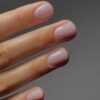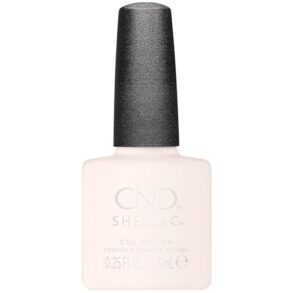
A nail-biting habit and having naturally weak nails make it difficult to grow long nails. As a result, you might turn to ways to fake that elusive length. Sure, there are tons of press-on nails available, but what if you want something a little more permanent? Getting gel tips or acrylic nails is the way to go.
According to celebrity nail artist Gina Edwards, deciding between getting a gel mani with tips and getting an acrylic set is largely up to the individual—and these two points are just the beginning. To find out more, we tapped Edwards and nail expert Lia Smith to break down all the differences between these types of faux nails and how to know which is the best option for you.
Meet the expert
- Gina Edwards is a celebrity nail artist and ambassador for Kiss Nails. Edwards’s client list includes celebs like Ayesha Curry and Nicole Kidman.
- Lia Smith is the North America education manager at nail care and polish brand OPI.
Keep scrolling for our complete guide to gel mani tips vs. acrylics.
What Are Gel Tips?
Contrary to popular belief, these are made with plastic—not gel—and have pre-set shapes. “They are attached to the nail with a gel product that is cured in a UV light,” says Smith. Furthermore, she explains that gel tips are usually clear, full-cover nails that come in a variety of sizes, lengths, shapes, and thicknesses. As such, they’re quick to apply.
Smith adds that both gel mani tips and acrylic nails are made of plastic. Where they’re different, however, is how they dry and take their form. “For gel, that means taking a thick substance, shaping it, and placing it into a UV light to cure it into the desired shape,” says Smith.
What Are Acrylic Nails?
“Acrylics are made up of a poly powder and monomer liquid that form a matte jelly substance, which covers your natural nail to help protect and lengthen,” explains Edwards. Smith furthers that acrylic can be overlaid to the existing nail, a plastic tip can be added for various lengths, and the nails can be sculpted into any length or shape.
Acrylic nails do not need UV lamps at any point in the process. Instead, your nail technician will mix a powdered polymer with a monomer liquid. This makes a putty-type of substance which then dries into the desired shape, says Smith.
How to Apply
Gel Tips
At a salon, the pre-set form is typically applied under the nail, and once it has been adhered, either soft or hard gel is applied on top and cured. After that, the manicure process looks just like your typical nail appointment: shaping, lacquer, and maybe nail art.
At home, Edwards says full-cover nails, such as the Kiss GelPress Starter Kit, are quickly and easily applied and create a high gel-like shine for up to seven days. The best part? No wear and tear on your nails.
Acrylics
At a salon, there are two popular techniques for applying acrylic nails. Either a plastic tip is glued onto your nail and filed down to look like a natural extension of your nail, or a form (like the ones used for gel tips) is used as a base for acrylic before being removed.
How to Remove
Gel Tips
Gel tips are designed to be removed and replaced, however, don’t try to do this at home. Smith urges those with gel tips to get them removed professionally. Otherwise, you may risk damaging your natural nails. Edwards adds that depending on whether you have soft or hard gel, removal time will vary.
Acrylics
Unlike gel tips, acrylics are not meant to be removed with every nail service. Instead, the client should make regular appointments to fill or rebalance the acrylic application. That said, it’s always best to get the acrylics removed by a professional.
Nail Damage
Technically, damage from both gel tips and acrylics is possible. This is especially true if the removal isn’t done correctly. Getting an inexperienced nail tech who doesn’t care about the dexterity of the nail can lead to infection if the nails are not filled in correctly, Edwards tells us. So make sure you see an experienced nail tech when you no longer want your faux nails—whether they’re gel tips or acrylics.
How to Choose
Ultimately, it boils down to lifestyle and maintenance. “Full-cover tips are initially fairly quick to apply. You can change shape and length each appointment, which requires some extra time for removal,” begins Smith. “Acrylic does not involve removal at each appointment, does not require a UV light for application, [and provides the] freedom to wear extreme lengths with more support.”
This post was originally published on this site be sure to check out more of their content.









